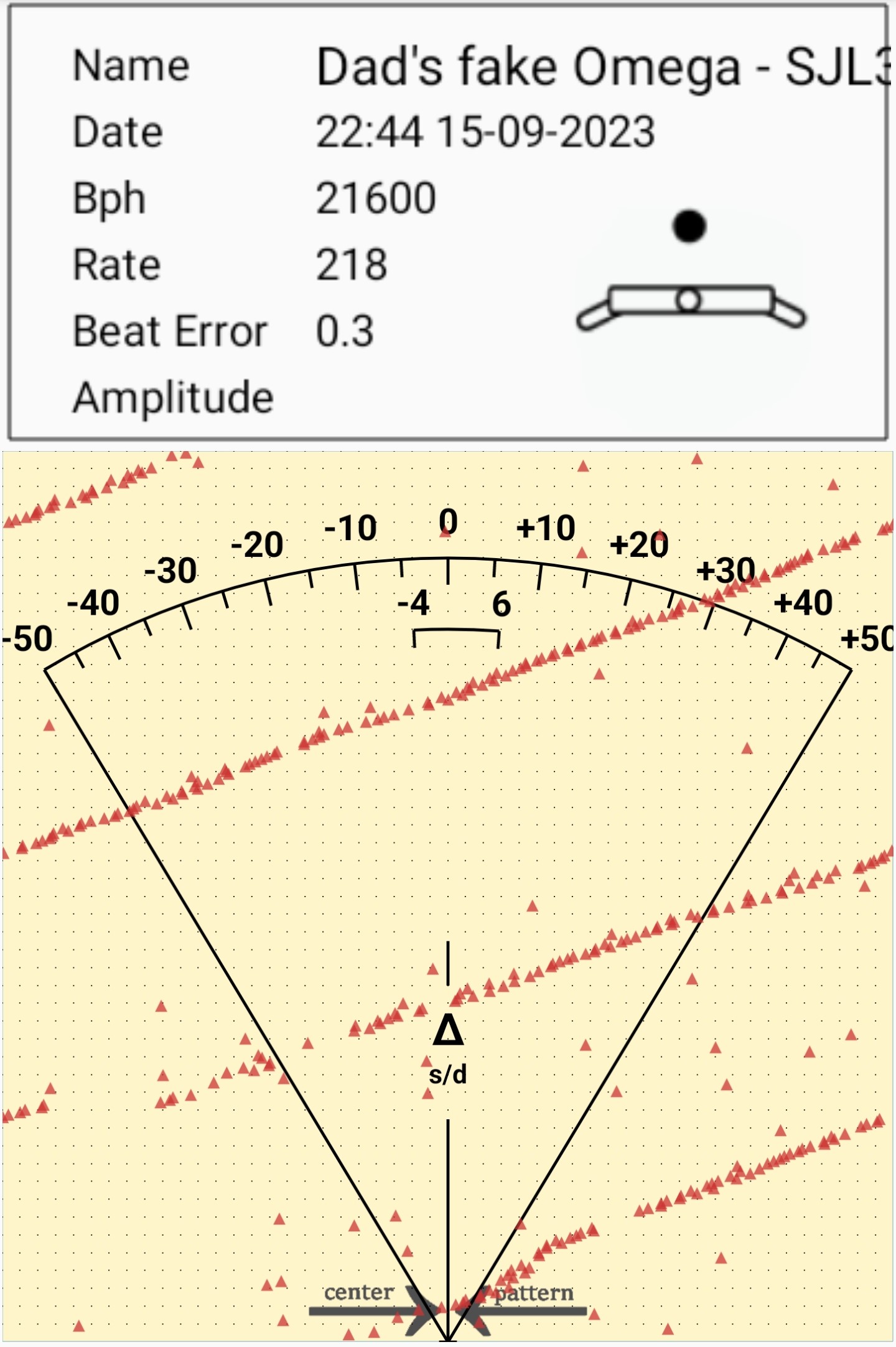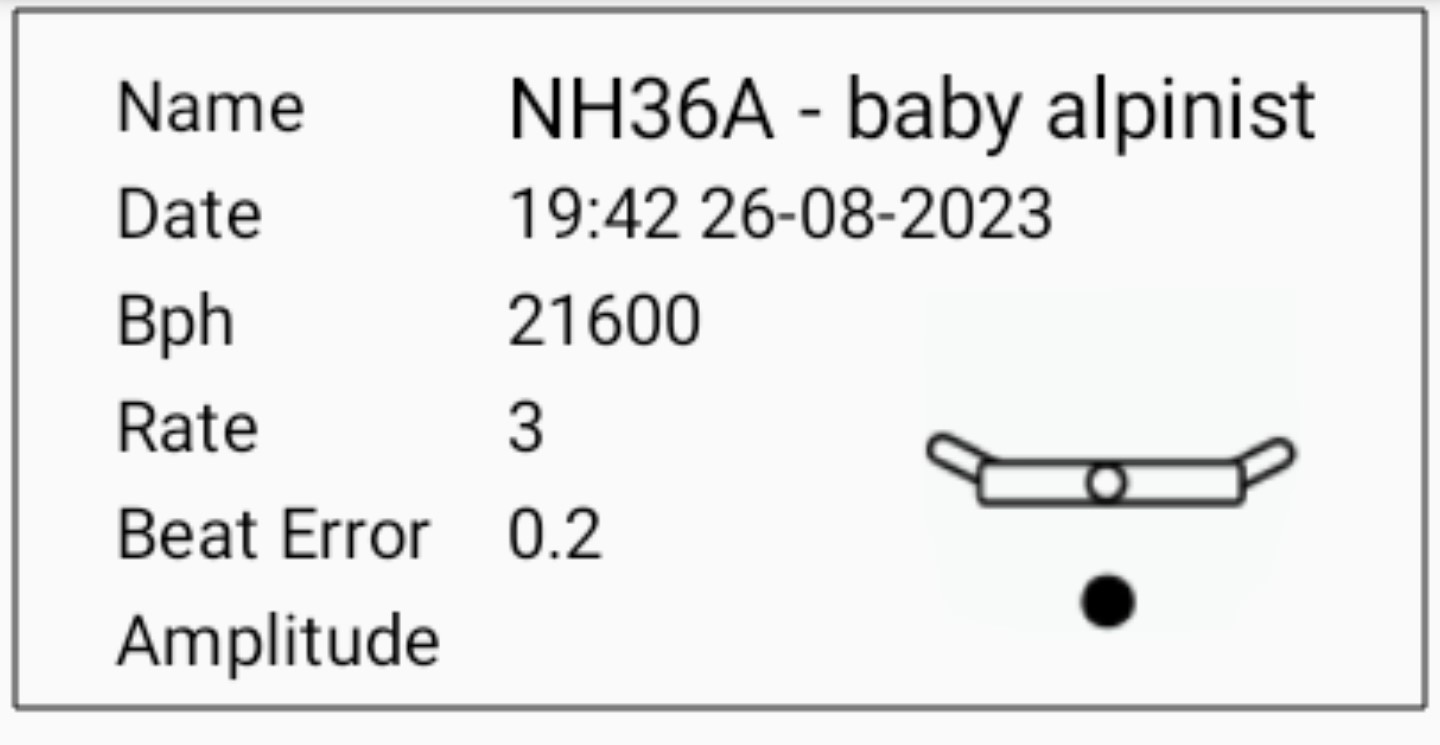Due to the mechanical nature of mechanical watches, there are many many moving parts susceptible to shock and wear. A watch may be running but if it’s off by +200 seconds a day it’ll quickly be off by over 23 minutes in a week.
Watchmakers use a device called timegrapher to measure the accuracy of a mechanical watch and each individual watch need to be regulated out of factory. And after years of usage, servicing will be required as well.
For amateurs like myself the free mobile timegrapher app is a godsend. When I first received my NH36 the movement measured +2s rate a day with beat error 0.2ms. This is fairly good for NH36, having a specified tolerance up to -20s~+40s.
The thing with new straps is they are quite stiff and not fitting the curvature of my wrist. Slippage is a common place and when it did, the watch may drop. First time it dropped from 0.5m above the ground, that actually caused the +2s daily rate to become 0s. Right when I was complementing the accuracy it fell 1m to the ground, this time with an rate of +65s a day.
I was frantically looking up how to fix this. With my skill I wouldn’t have been able to do a full reassembly if I took it apart. Luckily, there are two regulator arms on the balance cock that can be used to regulate a watch and bring it back to a reasonable accuracy. The one near the end of the hairspring is the stud carrier and the other one is the regulator.
Stud carrier controls beat error, or the time difference between the tick and tock of the movement as the balance swings back and forth. If the movement has a reasonably low beat error (say < 0.4ms) this shouldn’t be touched, otherwise, it’s worth adjusting the stud to avoid extra wear as the balance swings with unevenly.
Regulator controls the accuracy or rate of the movement. Moving this back and forth slightly changes how fast the balance moves and therefore how much faster or slower the rate per day will be.
Being in a rush I omitted that the stud can be left alone, and went on fiddling with both the studs and the regulator while putting the watch next to my phone as a timegrapher. The resultant 1.1ms beat error and +273 daily rate is fully expected. First time I’ve ever seen it “climb stairs” in the timegrapher.

Very carefully, wearing my loupe on one eye, I used a flat head screwdriver to slightly push around the stud until the beat error is down to around 0.7ms, not perfect, so after several attempts over a day I managed to bring it down to 0.2ms. There’s no “slight” adjustment as the stud is fiction fitted, it’s more like moving it around an area and see if I could hit the sweet spot.
Next is the regulator. Moving the stud resulted in the daily rate to fly up to +400s-ish and that’s normal. Referencing to the +/- mark on the balance cock I again slightly moved the regulator around such that the rate is down to +3s, which is well within margin of the movement’s specification.

Before learning that I could regulate my movement I for a time freaked out thinking I’ll have to buy another movement. As it turned out regulating an NH36 isn’t difficult. The experience reveals to me an inconvenient fact though—when the time to service this movement comes in 5 or 10 years of time, it’s probably best buying a new movement than to spend the time and effort servicing this industrial looking, mass produced mechanical movement. Or to think of it the other way, the cost of failing to service this movement is low, as replacement can be bought, hopefully easily, in 10 years.

